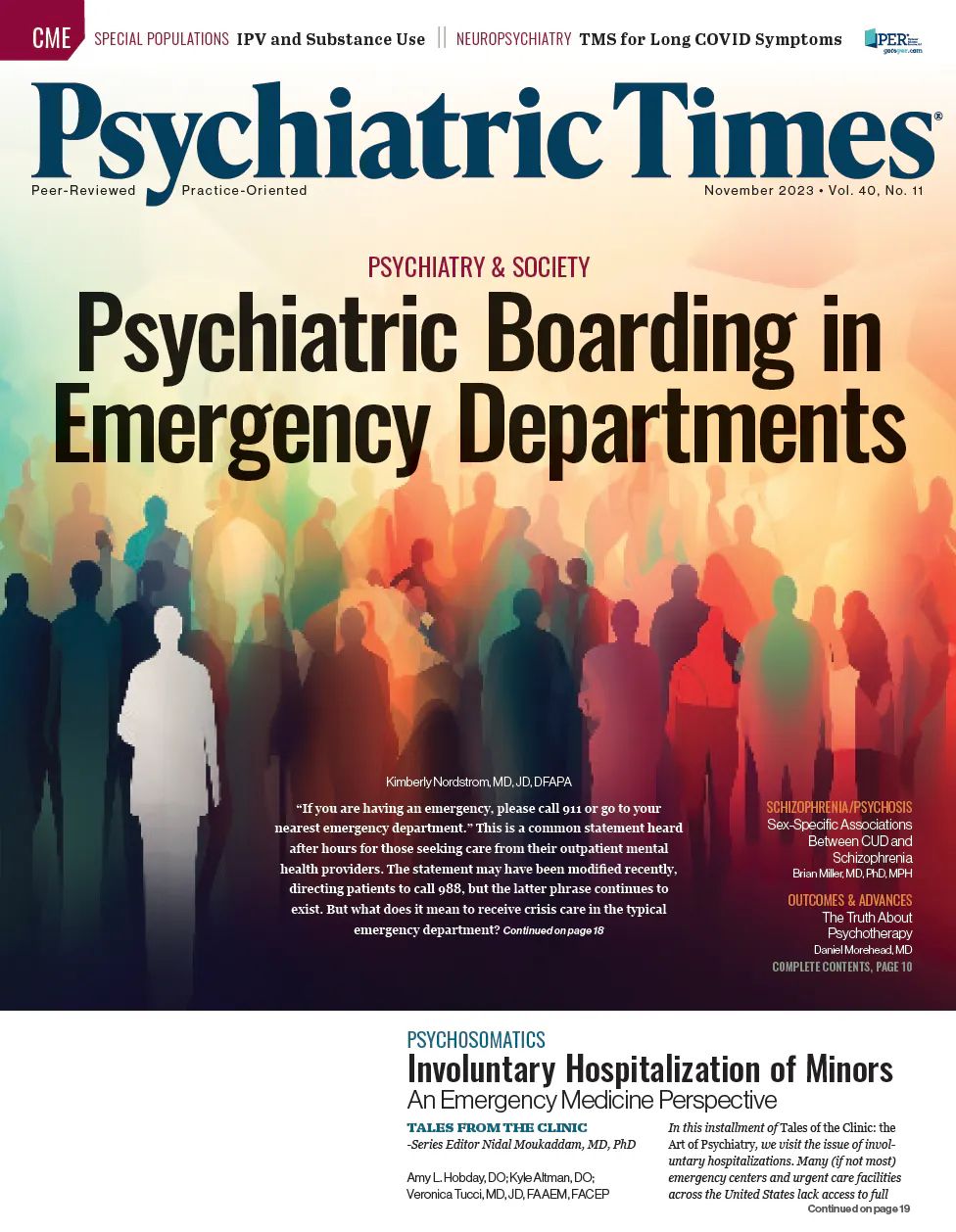News
Article
From the Pages of Psychiatric Times: November 2023
Author(s):
The experts weighed in on a wide variety of psychiatric issues for the November 2023 issue of Psychiatric Times.

In the November issue of Psychiatric Times®, we worked with experts from multiple psychiatric areas to bring you thoughtful articles about a wide variety of psychiatric topics, from involuntary hospitalization of minors to late-life treatment-resistant depression. Here are some highlights from the issue.
Involuntary Hospitalization of Minors: An Emergency Medicine Perspective
Halfpoint_AdobeStock

Medicine has changed considerably over the years with advancing treatments and technology; however, the 4 core ethical principles governing the art of practice have remained stable and consist of beneficence, nonmaleficence, justice, and autonomy.
Beneficence ensures that a physician acts to benefit the patient, while nonmaleficence protects patients by assuring a physician does no harm. The principle of justice functions in assuring all persons are treated in an appropriate and equitable manner; while autonomy refers to an individual’s intrinsic worth, which protects their right to make a rational and moral choice regarding themselves.
Autonomy, in most developed countries, is the primary ethical principle of medicine. Preserving an individual’s autonomy overrules a physician’s responsibility to beneficence, nonmaleficence, and justice. The right to autonomy is based on both competence and capacity. Continue Reading
Late-Life Treatment-Resistant Depression
Photocreo Bednarek/AdobeStock

Late-life depression (LLD) is prevalent and defined as major depressive disorder in adults 65 years and older. The prevalence rate of LLD among older adults living in the community is up to 5%. LLD has deleterious effects and is associated with increased functional disability, cognitive impairment, all-cause mortality, and suicide.
LLD is characterized by its chronic course, with frequent relapses and recurrences. The median time to a recurrent depressive episode tends to be short in LLD. The unstable remission rate could be due to multiple factors, including increased previous depressive episodes, high anxiety levels, medical burden, or neurodegenerative illness.
Furthermore, older adults with LLD tend to have a poor response to treatment with antidepressants, with the remission rates ranging between 55% and 81% in a first-line trial of selective serotonin reuptake inhibitors (SSRIs) or serotonin and norepinephrine reuptake inhibitors (SNRIs). Continue Reading
Examining Sex-Specific Associations Between Schizophrenia and Cannabis Use Disorder
cendeced/AdobeStock

Cannabis is a frequently used psychoactive substance. The potency of cannabis, as measured by the percentage of the psychoactive component Δ-9-tetrahydrocannabinol (THC), is increasing in the United States and in Denmark, with a corresponding increase in the prevalence of CUD. There is evidence that THC use may trigger or worsen the clinical course of schizophrenia.
In Denmark, parallel to the increased concentration of THC, the schizophrenia population-attributable risk fraction (PARF)—or the reduction in disease that would occur if exposure to a risk factor were eliminated—for CUD has increased 3- to 4-fold over the past 20 years.
There is growing evidence that the relationship between CUD and schizophrenia varies by sex. Males with early heavy or frequent cannabis use have an earlier onset of psychosis. Males also have a younger age of onset of CUD. The increased incidence of schizophrenia in males in comparison with females has been postulated to reflect these data on cannabis use. Continue Reading
Gabapentinoids: A Deeper Look
zeleniy9_AdobeStock

To keep up-to-date with the voluminous psychiatric literature, I scan many psychiatric and neuroscience publications in search of articles that pull me in for a deeper look. Recently, I skimmed the titles of a weekly email newsletter I receive and was immediately drawn to the first article: “Before You Prescribe Gabapentin, Consider These Risks.”
The first sentence of the third paragraph got my attention. The author erroneously stated: “Gabapentin (Neurontin) and pregabalin (Lyrica) are both gabapentinoids—psychotropic medications that cross the blood-brain barrier and mimic the inhibitory neurotransmitter gamma-aminobutyric acid (GABA).”
The next step was to read all of this article’s references. Surprisingly, all 5 references focused on the relationship of gabapentin with the use of opioids or in the treatment of pain, with no mention of the common off-label use of gabapentin in various psychiatric disorders such as anxiety and insomnia. Hence, I embarked on a literature search for recent comprehensive review articles to explore gabapentin in these disease states. Continue Reading
See the full November issue of Psychiatric Times here. And be sure to stay up-to-date by subscribing to the Psychiatric Times E-newsletter.
Do you have a comment on any of these or other articles? Have a good idea for an article and want to write? Interested in sharing your perspectives? Write to us at PTeditor@mmhgroup.com.






